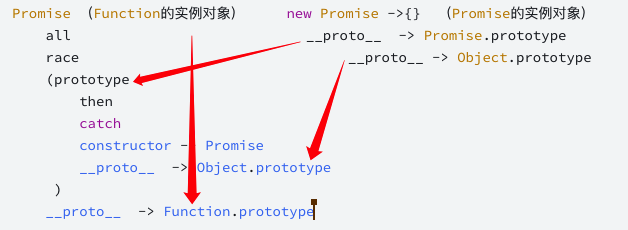JS继承方式
原型继承
Son.prototype = new Father();
- 存在问题
- 包含引用类型值的原型会被所有实例共享
- 创建子类类型时,无法向超类类型的构造函数中传递参数
js
// 原型继承
function Father(){
this.name = ["hhh","bbb"];
}
function Child(){}
Child.prototype = new Father();
let obj1 = new Child();
obj1.name.push('ccc');
let obj2 = new Child();
console.log(obj2.name); // ['hhh','bbb','ccc']
借助构造函数继承
- 又称经典继承。
- 在子类构造函数中调用父类的构造函数,借用call和apply
- 存在问题
- 只能继承父类构造函数的属性
- 方法都只能在构造函数中定义,没办法实现方法的复用
js
function Father(){
this.name = 'father';
}
function Child(...args){
Father.call(this, ...args);
}
组合式继承
- 结合以上两种继承方式的优点
- 使用原型链实现对原型方法的继承
- 使用构造函数实现对实例属性的继承
- JavaScript中最常用的继承方式
- 缺点是无论什么情况下都会调用两次超类的构造函数(耗内存),组合寄生式继承解决此问题。
js
// 组合继承
function Father(){
this.name = 'father';
}
function Child(...args){
Father.call(this, ...args);
}
Child.prototype = new Father();
Child.prototype.constructor = Child;
Child.prototype.show = function(){
console.log('1');
}
原型式继承
- 通过已有的对象创建新对象
- 缺点:所有实例都会继承原型上的属性,无法实现复用
- ES5中
Object.create()规范了原型式继承- 不考虑第二个参数,Object.create() 与 create() 方法的行为相同
- 第二个参数,与 Object.defineProterties() 方法的第二个参数格式相同,会覆盖原型对象上的同名属性
js
function create(obj){
let fn = function(){};
fn.prototype = obj;
return new fn();
}
寄生式继承
- 在原型式继承的基础上包装一层壳
- 无法复用
js
// 寄生式继承
function parasitism(obj){
let ins = Object.create(obj);
ins.show = function(){
return '1';
}
return ins;
}
组合寄生式继承
- 区别于组合继承,就是把第二次调用构造函数改成使用Object.create()函数来实现
js
// 组合寄生式继承
function Father(){
this.name = 'father';
}
function Child(...args){
Father.call(this, ...args);
}
Child.prototype = Object.create(Father.prototype);
Child.prototype.constructor = Child;
// 等效于
// const F = function(){}
// F.prototype = Father.prototype;
// Child.prototype = new F();
// 不能直接Child.prototype = Father.prototype
// 这样子如果增加 Child.prototype.testProp = 1; 同时会影响 Parent.prototype 。
